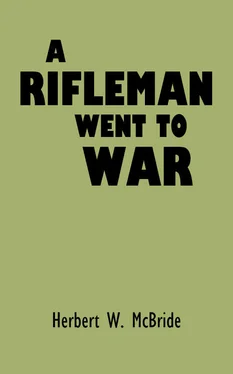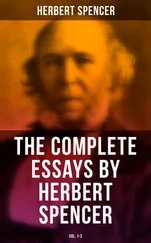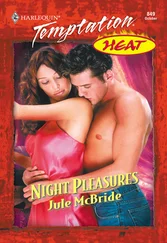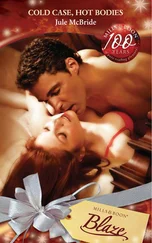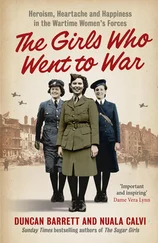This was but one of the asinine regulations that our Higher Command promulgated. Had they spent one-tenth of the time in trying to teach the newly-made soldiers something of the real and practical side of warfare, there would not be so many graves over there for the Mothers to visit.
Canada was fortunate in having General Sam Hughes at the head of her Militia Bureau — Minister of Militia and Defense — when the war started. Few men would have had the courage to do what he did. From the very start, he seemed to realize that this was to be a great war — greater than the world had ever seen — and he proceeded accordingly. The Gordian knot of red tape he cut with one slash of his pen and proceeded to apply the practical, common sense methods of industry. He authorized the purchase of necessary materials and equipment wherever they could be found. He built, at ValCartier, one of the greatest training camps and rifle ranges the world had ever seen. From one end of Canada to the other, he ranged back and forth with but the one thought — to make the Canadian Expeditionary Force thoroughly and practically efficient as fighting soldiers. The records show that he was eminently successful.
Throughout my whole service with the Canadians, covering more than two years, I had less trouble and bother regarding paper work and reports than any company commander in the United States Army encounters in a week — any week of any month of any year. If our Army, (U.S.), would adopt the systematic methods of any of our large manufacturing concerns, they could either cut off half the amount of money they are now expending or use that much additional for practical training purposes. Just in the matter of pay-rolls, alone, a saving of thousands of dollars and innumerable hours could be saved. In the Canadian service, each man had his “pay-book,” in which was recorded the date of his enlistment and, following that, entries showing when he was promoted to another grade. Subsequent pages were for the use of the paymaster. A soldier could go to any Field paymaster and, upon showing his book, receive whatever money he needed — within the limits of his credit, which was always shown in the book. Officers never had to turn their hands over to get theirs. Upon being commissioned, they were presented with a bank book and a cheque book. If they had been commissioned from the ranks, the amount due them as an enlisted man was shown to their credit and if during the war and overseas, an additional credit of fifty pounds (about $250.00) for uniform and equipment was advanced. From that time on, all the officer had to do was to keep track of his checks. On the 27th of each month his monthly salary was deposited to his credit. No vouchers or anything required.
The Second Division, to which we belonged, was particularly fortunate in having had some six months time for training in Canada and an additional four months in England. The First Division and the “Pats” had been hastily mobilized and sent over as quickly as possible, but as they were largely made up of old, seasoned soldiers, they did not require much training. It was different when it came to the Third Division and the Fourth. By the time they were mobilized it was necessary to get them over as quickly as possible, and, as they comprised a large percentage of men who had had no previous military training, many of them never had any chance to learn how to shoot. Some, I am told, had fired only ten shots before going into action. The experience of the United States vividly emphasizes this same point. Many men of our National Army went into action without having ever fired a shot from their rifles. And yet, we have men and women in this country — fathers and mothers, too — who oppose the idea of training our young men in the use of arms. They know — they must know, that in case of war their sons will go whether they like it or not, yet they refuse to give the boys a chance to learn something about the game. It would be futile to speculate on how many of the little white crosses would not now decorate the graves overseas had the men whose names appear thereon been given the opportunity to learn how to shoot straight. But it is certain that the number is great.
On all our marches, we were accompanied by our bands. Yes, I said bands because we had two, a Bagpipe band and a Bugle band. And they were good. I never saw any, outside the Scots Guards band that could compare with our Pipe band and the Bugle band was equally good. They would alternate in leading the march, the other either bringing up the rear or marching in the middle of the battalion. One of them was always playing. By some system of signalling or by prearrangement, the instant one ceased to play, the other struck up. Bugles and drums — pipes and drums — but always the drums; aye, that’s the music for the soldier. Coming into town after a hard and gruelling march, when those “Scotties” would start “The Cock ’o the North” (which was our own regimental air), you could see the chins come up and the shoulders square away and the command would stride along as though just coming from breakfast. The old fife and drum bands of Civil War days, and which were still common in my youth, were equally inspiring and I have never been able to understand why they were discontinued as “Field Music” in the United States Army. That’s marching music and fighting music, I want to tell you.
Throughout the winter and early spring, we marched and we shot and we drilled. The close order drill in the British service is much simpler than that of the U.S. Army — yet they seem to be able to get to the desired spot and in the required formation just as easily and quickly. But we had but little of that, anyway. What we did mostly was to get out and march anywhere from ten to twenty miles and back again, learning to keep “closed up” at all times. When on the road, a column of British soldiers is as compact as a snake. There are no file-closers and no officers wandering around outside the column of “fours.” Officers and N.C.O.’s simply slip in and fill up the blank files or form extra ranks at the head or tail of their own organizations. Often, from some hill-top, I have looked forward (or back) and marveled at the appearance of that long, smooth column. In all my experience, both before the war and since, I have never seen any large unit of the United States services that could equal it in march discipline.
We were quartered in two separate buildings, about a mile or more apart: the “Right half,” comprising Companies A and B, at the Armouries, where the Headquarters was also located and the “Left half,” Companies C and D, in what had been a large cereal mill. The Machine Gun Section was with the latter. As the mobilization for all parades or maneuvers was at the headquarters, we of the left half had the benefit (?) of that extra march, both going and coming, each day.
There were special courses of instruction for officers and noncommissioned officers — days of sport and recreation and, every Sunday, the inevitable church parade. About the only thing I remember about these latter is that we always sang: “Onward Christian Soldiers.” We went to various churches, as that is one point on which the British army authorities are particular. When a man enlists or is commissioned, he must specify his religion — denomination: Whether Church of England, Methodist or whatever it happens to be and if you do not belong to any of the recognized sects you either choose one or are summarily attached to the C.E. (Church of England). The Catholics always had their own party, under one of their own officers. While I never went with that bunch, I’ll bet they also sang “Onward Christian Soldiers.”
The Army and Navy Veterans Association of Kingston presented the Battalion with handsome “Colours,” with appropriate ceremonies. These were deposited in the custody of the Canadian High Commissioner, in London prior to our departure for France.
Читать дальше
